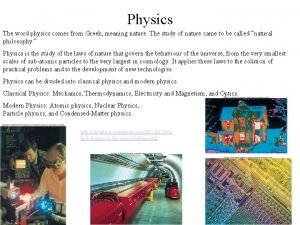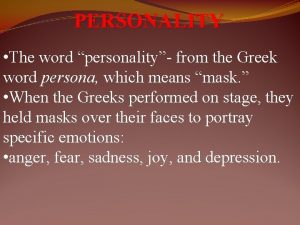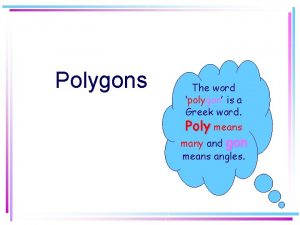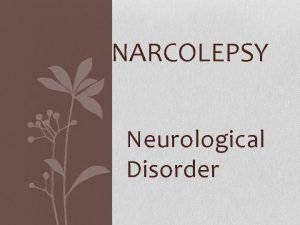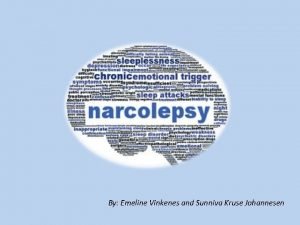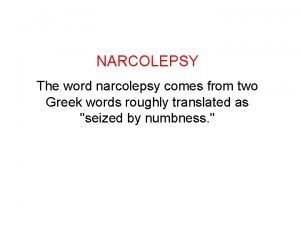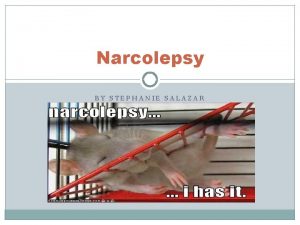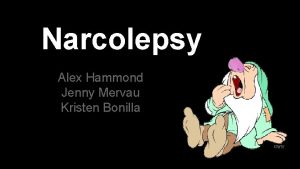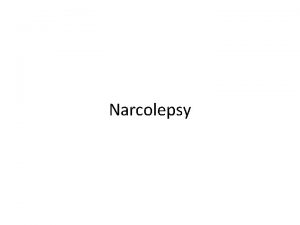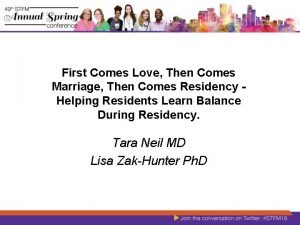NARCOLEPSY The word narcolepsy comes from two Greek








- Slides: 8


NARCOLEPSY The word narcolepsy comes from two Greek words roughly translated as “. "

SYMPTOMS OF NARCOLEPSY – Excessive Sleepiness § All people with narcolepsy experience day with episodes of when fully involved in an activity. § It is sometimes described as an “ during the , even daytime need for naps”. These events may be characterized by the following behaviors: § Patients often have periods of drowsiness every hours that usually end in short naps. § Patients may sleep for a few minutes, particularly if they are in an or for a few hours if they are. § Patients often underestimate and may not recall clearly their during that time.

SYMPTOMS OF NARCOLEPSY -- Cataplexy is an or strength that results in an inability to move and always occurs. § Around of patients with narcolepsy have symptoms of. § The following events may be cataplexy triggers: ü Sudden emotion, (the most common trigger) ü Following a heavy meal ü During periods of

SYMPTOMS OF NARCOLEPSY – Cataplexy continued are completely absent during a cataplectic attack. § § Cataplectic attacks can be very minimal and appear as or affecting only the (most attacks last less than 30 seconds). § In severe cases, a person may fall and remain paralyzed for as long as several minutes. § Typically the patient's head will suddenly fall forward, the jaw becomes § , and the knees will Speech may become suddenly . and stutter-like.

SYMPTOMS OF NARCOLEPSY – Atonia is a sense of that occurs between wakefulness and sleep, usually upon or sometimes at the onset of sleep. § The person is but cannot speak, cannot move (cannot even open the eyes), and cannot breathe deeply. § Atonia rarely lasts beyond , but when it first occurs, this experience can be terrifying, particularly if the patient also develops .

SYMPTOMS OF NARCOLEPSY – Hynagogic Hallucinations Hypnagogic Hallucinations. Hypnagogic hallucinations are dreams that which can cause visual, auditory, or touchable sensations. , § They occur between waking and sleeping, usually at the onset of sleep, and can also occur about 30 seconds after a. § Commonly they may involve seeing that shift in size and shape. § Auditory hallucinations may include or. § A person may also hallucinate feelings of rubbing or light touches, even.

SYMPTOMS OF NARCOLEPSY – Microsleep & Automatic Behavior Microsleep and Automatic Behavior During microsleep episodes, patients behave. without Some examples include: § People with narcolepsy can be driving or walking competently but end up in a location different from the intended one. § A narcolepsy patient can be carrying on a conversation and jump from one unrelated topic to another or just trail off and stop talking altogether. § The patient may suddenly perform , such as putting socks in the refrigerator. § Their movements may suddenly become slow or clumsy.


